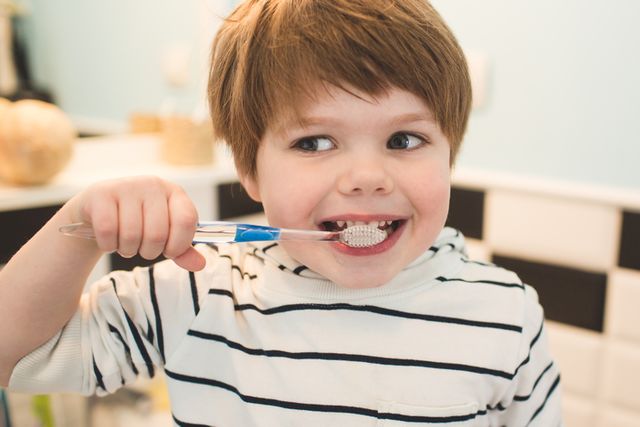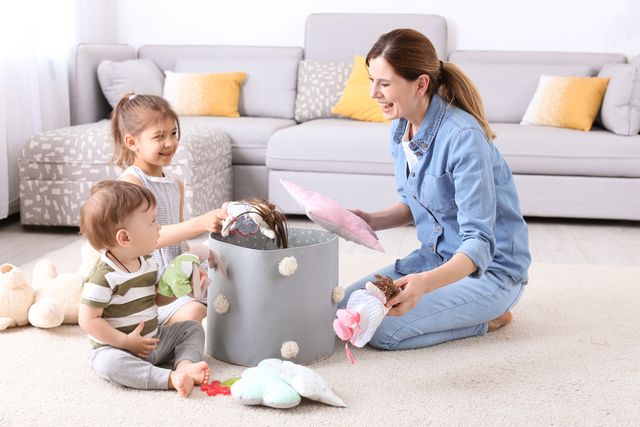General Information
The ADHD Routine: How Daily Routine for Kids with ADHD can be Beneficial
If you’re a parent of a child with ADHD (attention deficit hyperactivity disorder), you may have already heard that a daily routine for kids with ADHD can be beneficial. You may be searching for the exact recipe for a perfect daily routine for your family to try.
An “ADHD routine,” if you will. Unfortunately, I fear I must disappoint you right from the beginning. There is no perfect routine that can be generalized from family to family.
Each child’s hardwiring sets them up for different life experiences. Yet, there has been much research to try to help parents. Research results exist to help parents understand why and how a daily routine for kids with ADHD is beneficial.
Furthermore, the intent as also been to learn what types of ADHD routine is generally well-accepted.
Today I’d like to take the time to examine that research, in order to help parents better navigate their daily life.
This information might also be useful to teachers, babysitters, and friends. So, anyone who may have regular interaction with a child who faces the challenges brought upon him or her by ADHD may benefit.
Early research supported the use of a daily routine for kids, in general. Studies showed that children who had difficulty with:
- behavior at mealtimes or
- going to bed at night
could be habituated into a more manageable behavior pattern with a structured routine.
So, it has been assumed for the most part that daily routines would benefit children facing ADHD symptoms as well.
Firstly, let’s consider the typical symptoms a child with ADHD faces. Typical symptoms include:
- Inability to focus or pay attention
- Hyperactivity
- Impulsivity
This disorder significantly impairs a child’s daily life. Also, handling the stress of this is difficult for parents and teachers alike.
The challenges range from finishing homework without a fight to sitting through mealtime without an argument. We know how miserable some days can be for everyone involved.
But, it’s not just about making your life at home easier.

Surveys show that children with ADHD are more likely to experience:
- academic failure
- social conflict with friends
- family relationship challenges, and
- low self-esteem.
One particular study I’ll refer to in this article is from Harris et al: “Child Routines and Parental Adjustment as Correlates of Internalizing and Externalizing Symptoms in Children Diagnosed with ADHD” from 2014.
These psychologists believe these long-term negative consequences can be predicted, in part, by the level with which children exhibit externalizing or internalizing symptoms.*
Let me explain some of the terminology used in the study:
Internalizing symptoms are those like feeling sad, depression, general unhappiness and anxiety.
Externalizing symptoms include aggression, being argumentative and impulsive behavior.
The study showed that some routines minimize ADHD symptoms.
“One important factor in producing consistency and stability is the use of routines” (Harris et al). Their study examined how a daily routine for kids with ADHD may be related to internalizing/externalizing symptoms.
They found that families that implemented routines reported significantly fewer externalizing behaviors. For example, outbursts, impulsivity, anger, etc. were significantly fewer.
They say, “It may be that when parents provide a structured, consistent, and predictable environment for their child, the child may engage in fewer tantruming, oppositional, and argumentative behaviors.”

They specifically found a correlation between symptoms and certain types of daily routine for kids with ADHD:
1. A Household Routine – 2. A Routine for Discipline – 3. A Homework Routine
So, if you’re looking to create a structured ADHD routine for your child, start with one of these three types.
The scientists explained that “specific subtypes of routines including Household, Discipline, and Homework Routines were found to significantly predict symptomatology.”
In households that followed one or all of these types of routines, children were more significantly able to adjust and manage their ADHD symptoms, such as arguing and outbursts.
What is a good Household Daily Routine for Kids with ADHD?
A Household Routine is one that requires your child to accomplish a list of specific tasks that help the smooth operation of the household. Some tasks on your Household Routine could include:
- Cleaning up after dinner on weeknights
- Putting away toys after playtime
- Bringing laundry baskets out on laundry day
- Feeding and giving water to pets in the morning and evening
- Having a specified time frame for screen time on weekdays versus weekends
If staying organized is difficult for your family, check out this article on organization methods for families dealing with ADHD.
Contributing to the family will help your child feel a sense of empowerment. Furthermore, they’ll likely feel a greater sense of responsibility towards the happiness and flow of his/her family as a whole.
Many times, children feel useless or ineffective, and like their opinions are overlooked. A Household Routine provides an opportunity to talk with your child about taking ownership over his/her responsibilities.
If he or she is unhappy or arguing about “the way things are” in general, this will help. Assessing whether every member of the family is contributing his or her share of the Household Routine is a good place to begin a productive discussion on making changes.
So, how does the research show a household routine benefitted kids with ADHD?
Significantly higher reports of high self-esteem, and accomplishment and consequently depression and anxiety!

What is a good Homework Daily Routine for Kids with ADHD?
A Homework Routine includes any set of guidelines for your child or student to complete homework. Making the routine simple and required every day forms a great foundation.
It is a great way to create good study habits before academics become even more challenging in higher education.
Even if your child claims he or she has no homework one day, use the time wisely. The time can be used in another way to further their academics.
For example:
- exercises such as the CoordiKids Homeschool Brain Break exercises ,
- helping another family member with homework, or
- getting quizzed on challenging topics
These are all healthy and stimulating activities.
Some examples of Homework Routine habits include:
- A thirty-minute break immediately upon getting home, then a designated amount of homework time
- Group homework time on schooldays, including parents being available for help during a certain time frame
- Specifying 2-3 acceptable locations to homework in a distraction-free environment. (Research shows that doing homework in the same place and time every single day is less effective!)
- Use an alarm or a chore chart to remind children to get started on their homework time. However you decide on the reminder, stick to it. This means no nagging 3-4 times. If you’ve reminded them once after the alarm has gone off and they still haven’t started, then they must face the consequences.
Having specified times when there will be teamwork or assistance for some tasks versus independent tasks is a great way to teach children that some responsibilities require independence, while others will have a support system to help them succeed.
If sitting still for homework is particularly challenging for your child, consider this article: Why is It My Child Can’t sit Still?
What is a good Discipline Routine for Kids with ADHD?
A Discipline Routine simply means having some sort of standard discipline in place within your household. Discipline can range from taking away screen time to being “grounded”.
In addition, having “time outs” can be effective. “Time outs” mean a child must sit quietly in a secluded space for a few minutes before returning to the family or activity.
Children with ADHD benefit from taking a small time out – or a “pit stop” – when their emotions start building.
Create language your family can use to identify and ask for a pit stop! This can then be used before getting to a point where discipline is needed.
If emotional regulation is a particular challenge for your young child, check out our lesson plans for teaching emotional regulation
Other examples of elements of a Discipline Routine could be:
- Having a set of family rules that, if broken, warrant discipline
- One warning before initiating discipline
- A time-out corner or ‘naughty step’
- Utilizing one minute of time-out for every year in the child’s age
- Requiring a child to apologize and hug after receiving discipline
- Having a family discussion about actions that warrant discipline
- Taking away screen time for certain levels of discipline

Strict, But Flexible is the Key!
However, I found it interesting that the researchers came up with another observation. The researchers discovered that families with an extremely rigid routine did not observe the aforementioned benefits!
In fact, overly-strict routines created even MORE acting out by children with ADHD.
“Too much rigidity or a lack of flexibility in the implementation of the discipline routine could result in more inappropriate or ‘‘acting out’’ behaviors. Adherence to rigid and more authoritarian discipline routines may result in higher levels of externalizing behavioral problems.
Thus, encouragement of discipline routines that include flexibility and warmth is likely helpful when treating children and families. It would likely be beneficial for parents of children with ADHD to develop their skills and abilities so that they could effectively implement routines in a consistent but flexible manner.
This may then help with reducing the occurrence of internalizing and externalizing symptoms among their children.”
So, how can parents be strict, but flexible, with an “ADHD routine?”
The idea of a strict routine with inherent flexibility… I find myself thinking back to a book I read many years ago. The book is called Bringing Up Bebe by Pamela Druckerman.
Pamela is an American woman who lived in France for many years during the time she had her first child. Her observations on the differences between parenting styles across cultures are discussed in the book.
One of the things that Parisian women taught the author about parenthood is the French concept of the cadre. A cadre, or a strict framework within which to parent, is what Pamela related.
I had to dust off my copy of the book to share with you the author’s description better than I could myself:
“The cadre (meaning “frame” or “framework”) is the mental image that French parents have about how best to raise kids.
They strive to be very strict about a few key things – that’s the frame. But inside the frame, they aim to give kids as much freedom as they can handle.
Parents decide which things they will be strict about. Some examples include:
- At bedtime you have to stay in your room, but inside your room you can do whatever you want.
- You can watch only two hours of television on the weekend, but you choose when and what to watch.
- You must taste a bit of everything at a meal, but you don’t have to eat it all.
- I don’t buy non-necessities on demand, but you can buy them with your pocket money.
The point of the cadre isn’t to hem in the child; it’s to create a world that’s predictable and coherent to him/her. It gives you confidence. You have confidence in your kids, and your kid feels it.”
I find this to be such a beautiful concept that I hope parents all over the world can appreciate. It seems to be describing exactly what the researchers studying the benefits of daily routine for kids with ADHD came to understand.
References:
Child Routines and Parental Adjustment as Correlates of Internalizing and Externalizing Symptoms in Children Diagnosed with ADHD.
Abbey Harris, Laura Stoppelbein, Leilani Greening, Stephen Becker, Aaron Luebbe, and Paula Fite. Child Psychiatry & Human Development, 2014.https://link.springer.com/article/10.1007/s10578-013-0396-4
Reducing Bedtime Tantrums: comparison between positive routines and graduated extinction. Adams LA, Rickert VI. Pediatrics, 1989.Bringing Up Bebe, Pamela Druckerman. Penguin Publishers, 2012..